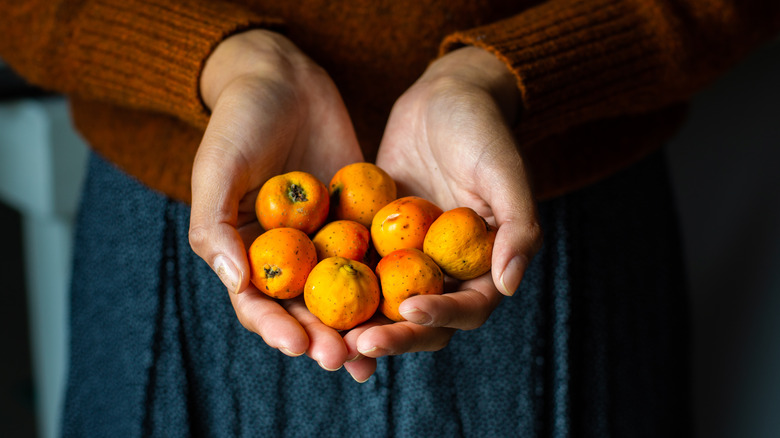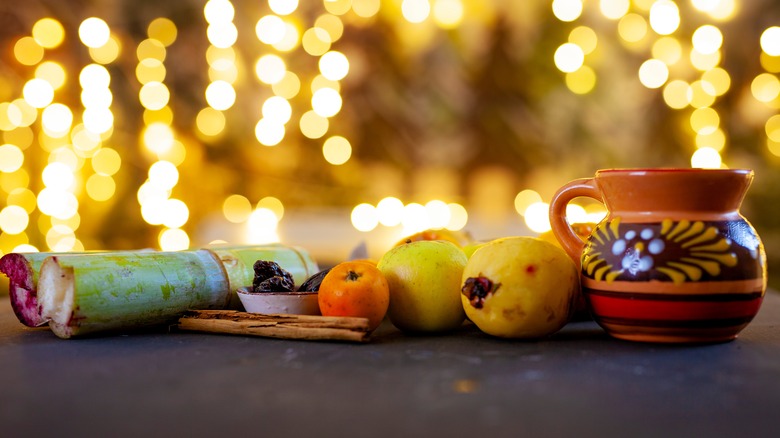How The Humble Tejocote Plays An Important Role In Mexican Celebrations
When it comes to forbidden fruits, tejocotes are no stranger to being contraband. In fact, back in the early 2000s, they were the No. 1 most illegally smuggled fruit into the United States from Mexico. Tejocotes are naturally prone to diseases and pests like fruit flies, so in order for the United States to protect its own produce, "fruitleggers," when caught, could have faced charges up to $10,000. But why were people willing to risk such hefty fines for one small fruit? The answer lies in culture and tradition.
Tejocotes, as it turns out, are small, spotted, orange crabapple-looking fruits that are a species of hawthorn. When eaten fresh, they have a bland, cottony taste and texture, but once cooked, they become sweet and caramelized. At the end of the fall, as the Day of the Dead approaches, Mexico is flooded with deep shades of gold, from glowing marigolds to tejocote garlands that serve as offerings to the ancestors and gifts to the earth.
After Day of the Dead has passed, tejocotes are then put to further use in Mexican Christmas tradition: They are the main ingredient in ponche, a punch served during Christmas and New Year's. Moreover, tejocotes are candied and spiced to make a Christmas syrup called dulce de tejocote. For Mexican-Americans, incorporating tejocotes into holiday festivities is just as integral, symbolic, and nostalgic as mistletoe and pine are to the United States; therefore, they were willing to pay high prices for precious fruits snuck into the country.
How you can use tejocotes
Fortunately, the ban on bringing tejocotes into the United States ended after the U.S. Department of Agriculture (USDA) opted for importing in small quantities. Now, many Mexican-American markets and grocery stores carry the fruit in plenty during the winter months, but in a pinch, they can be found in jars online.
Our recipe for Mexican ponche de frutas is a more accessible version of the traditional Christmas ponche, as tejocotes are not readily available nationwide. But if you do live somewhere the fruit is sold, the pears in this recipe can easily be swapped out for traditional tejocotes. The other ingredients — cloves, cinnamon, guava, tamarind, prunes — are all culturally traditional in ponche, which is made in a similar fashion to wine or cider.
Alternatively, you can make dulce de tejocote with similar ingredients. Tejocotes, pears, apples, figs, guava, and spices merge together on the stove to caramelize and cook for about 45 minutes to an hour. This can be used as a filler for cupcakes, a topper for pancakes, or just eaten by itself and served with cold milk.

